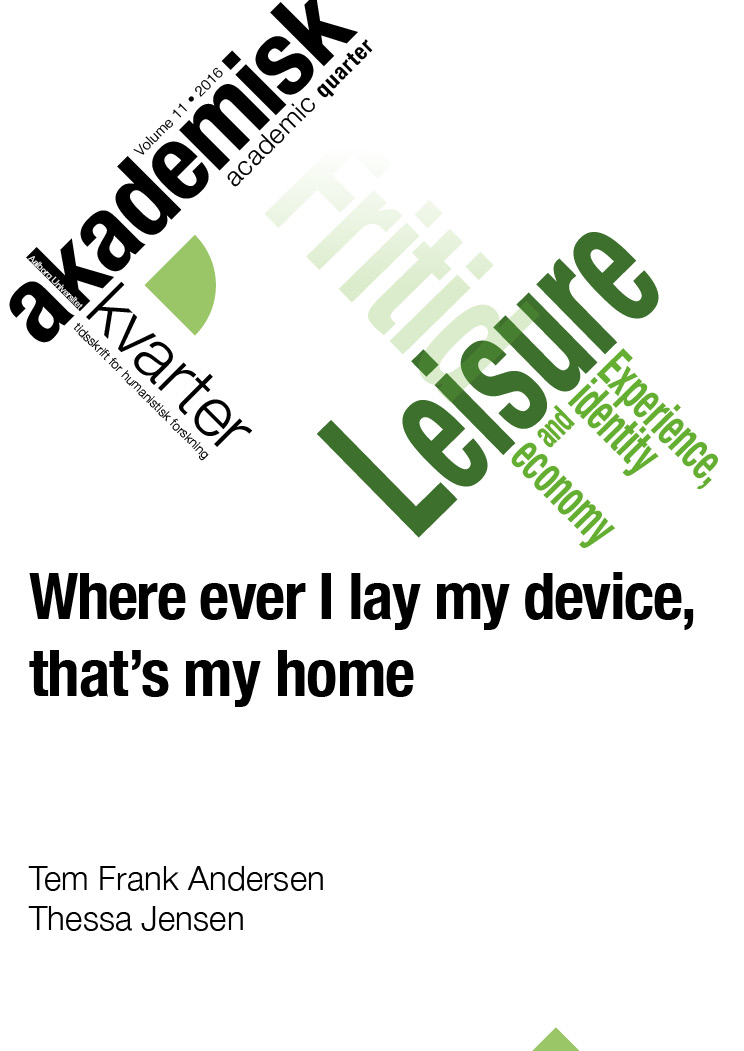Abstract | Abstract
The key interest of this article is the concept of domestication as a central framework for both sociological and ethnographic media studies. Domestication translates into that process through which both new informations and communication technologies, interactive digital media and wearable devices are ”fitted” or ”knitted” into the fabric of everyday domestic life. The purpose of the article is to investigate if changes in the media technologies have any impact on the analytical framework of domestication: Does the notion of domestication still offer a meaningful account for the use of mobile media such as iPods, iPads and iPhones, and the flows of applications and content? The theoretical context of the article consists of the British tradition of media and information technology studies (Silverstone & Hirsch 1992, Berker et al. 2006) and the American everyday life studies of mobile telephones (Ling 2004, Ling 2008). In relation to this journal’s theme on Leisure the article assumes that domestication is both a process that happens in the context of the domestic sphere and as such is a central part of the structural dimension of doing leisure. Leisure is communicating with your boyfriend on a ”forbidden” mobile telephone, as well as using the mobile phone in rituals of both domestic consumption and individual uses. But what happens with domestication when the dominating context for leisure use of mobile phones or touch media no longer is the home or the household, but rather the passages and inbetweens we move through in our everyday life movements?
